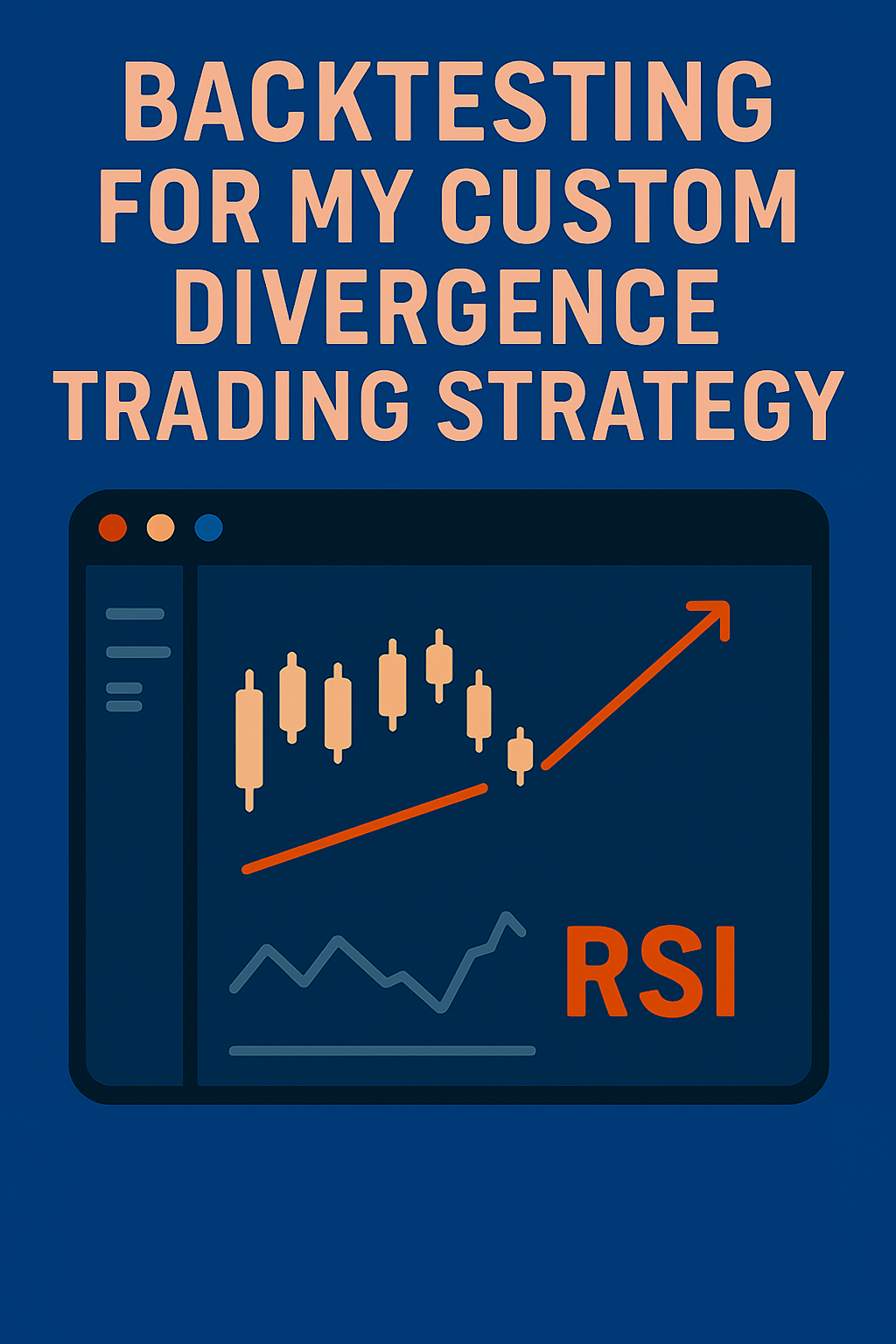Introductionfor Backtesting Divergence Trading
Backtesting is a crucial step in refining any trading strategy, especially when dealing with divergence-based setups. By testing historical data, traders can evaluate the effectiveness of their custom divergence strategy, identify potential weaknesses, and optimize their approach before applying it in live markets.
In this comprehensive guide, we will explore:
✔ The importance of backtesting in divergence trading
✔ Step-by-step backtesting methodology
✔ How to analyze historical divergence signals
✔ Common pitfalls and how to avoid them
✔ External resources for further learning
For additional insights, check out Vestinda’s divergence backtesting guide and TradeDog’s divergence cheat sheet for expert perspectives on divergence trading techniques.
1. Why Backtesting Is Essential for Divergence Trading
A. Understanding the Role of Backtesting
Backtesting allows traders to simulate past market conditions to determine how well their divergence strategy would have performed.
✔ Identifies profitable setups – Helps traders refine entry and exit points.
✔ Reduces risk – Traders can optimize stop-loss and take-profit levels.
✔ Improves confidence – Validates the effectiveness of a strategy before live trading.
B. How Divergence Strategies Benefit from Backtesting
✔ Confirms divergence signals – Ensures that divergence patterns are reliable.
✔ Optimizes indicator settings – Adjusts RSI, MACD, and Stochastic parameters for better accuracy.
✔ Enhances trade execution – Helps traders refine timing for entries and exits.
For more details, visit Vestinda’s divergence backtesting guide for insights into backtesting divergence setups.
2. Step-by-Step Backtesting Methodology
A. Selecting Historical Data for Backtesting
✔ Choose a relevant timeframe (daily, hourly, or weekly charts).
✔ Use high-quality historical price data from trusted sources.
B. Identifying Divergence Signals in Historical Charts
✔ Bullish Regular Divergence – Price forms a lower low, but RSI forms a higher low.
✔ Bearish Regular Divergence – Price forms a higher high, but MACD forms a lower high.
C. Executing Backtesting Trades
✔ Enter trades based on divergence confirmation.
✔ Set stop-loss orders below support or above resistance.
✔ Use a risk-reward ratio of at least 1:2 for optimal trade management.
For additional insights, check out TradeDog’s divergence cheat sheet for expert perspectives on divergence trading setups.
3. Analyzing Backtesting Results
A. Evaluating Performance Metrics
✔ Win rate – Percentage of successful trades.
✔ Profit factor – Ratio of total profits to total losses.
✔ Drawdown analysis – Measures risk exposure during losing streaks.
B. Adjusting Strategy Based on Backtesting Insights
✔ Optimize indicator settings to improve accuracy.
✔ Refine entry and exit rules based on historical performance.
For more insights, check out Trade Ideas’ guide on optimizing trade strategies for expert perspectives on refining trading setups.
4. Common Pitfalls in Backtesting & How to Avoid Them
A. Overfitting the Strategy
✔ Avoid excessive optimization that makes the strategy too specific to past data.
B. Ignoring Market Conditions
✔ Consider economic events and volatility shifts that may impact divergence signals.
C. Failing to Account for Slippage & Execution Delays
✔ Simulate realistic trading conditions to ensure accurate backtesting results.
For additional resources, visit Vestinda’s divergence backtesting guide for expert perspectives on avoiding backtesting pitfalls.
Final Thoughts: Mastering Backtesting for Your Custom Divergence Strategy
Backtesting is a critical step in refining your custom divergence trading strategy, allowing you to validate signals, optimize execution, and minimize risk. By following structured backtesting methodologies, traders can enhance their profitability in the forex market.
Would you like a custom backtesting template or advanced divergence optimization techniques? Let’s discuss!
For further reading, visit Vestinda’s divergence backtesting guide and TradeDog’s divergence cheat sheet for expert perspectives on divergence trading techniques.

No responses yet